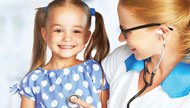
-
 Contractual Partners
From this section it is possible to access to a description of each contractual partner of the Softis-Ped project.
Contractual Partners
From this section it is possible to access to a description of each contractual partner of the Softis-Ped project.
-
 Lecturers
From this section it is possible to access to the information about the paediatric lecturers involved in the Softis-Ped Project in the 5 European countries involved.
Lecturers
From this section it is possible to access to the information about the paediatric lecturers involved in the Softis-Ped Project in the 5 European countries involved.
-
 Residents Working with Children Information
From this section it is possible to access to the information about the paediatricians involved in the Softis-Ped Project in the 5 European countries involved.
Residents Working with Children Information
From this section it is possible to access to the information about the paediatricians involved in the Softis-Ped Project in the 5 European countries involved.
-
 Paediatric students
From this section it is possible to access to the information about the paediatric students involved in the Softis-Ped Project in the 5 European countries involved.
Paediatric students
From this section it is possible to access to the information about the paediatric students involved in the Softis-Ped Project in the 5 European countries involved.
-
 Associated Partners
As a result of the exploitation activity a number of associated partners officially joined the project in order to contribute to the improvement of the project impact on their target groups and to ensure the project sustainability by continuing using the project deliverables in the next years.
Associated Partners
As a result of the exploitation activity a number of associated partners officially joined the project in order to contribute to the improvement of the project impact on their target groups and to ensure the project sustainability by continuing using the project deliverables in the next years.
Events
The Softis-Ped project has been promoted trough conferences and articles.
-
 Conferences
The Softis-Ped project was presented in a number of events in order to report about the activities carried out and the results achieved
Conferences
The Softis-Ped project was presented in a number of events in order to report about the activities carried out and the results achieved
-
 Training Activity
The training activity 'Soft Skills in Pediatrics' was held at the University of Medicine and Pharmacy of Tirgu Mures (RO)
Training Activity
The training activity 'Soft Skills in Pediatrics' was held at the University of Medicine and Pharmacy of Tirgu Mures (RO)
-
 Press Review
The Softis-Ped project partnership made contacts with web sites focusing on the fields of paediatrics and education
Press Review
The Softis-Ped project partnership made contacts with web sites focusing on the fields of paediatrics and education
This section of the Softis-Ped portal provides administrative information for the project contractual partners and for the European Commission and it is password protected.
Training for Paediatricians and Paediatric Students
Homepage > Training > Training for Paediatricians and Paediatric Students

This training package is addressed to students and medical practitioners in paediatrics on how to autonomously learn, develop and consolidate their soft skills for improving the quality of paediatric services.
Communicating with Peers
Soft-skills in the video: the oral clinical presentation improves the coordination of patient care, efficiency, teaching and learning processes, and shows reliability, organization, clinical reasoning and making decision processes
The video is in English and subtitle in English are available
Soft-skills in the video: communication with family is an enriching tool to improve the quality of medical history and family information. This oral presentation contributes to perform a patient-centred care approach and enrich the educational process to integrate history with medical examination.
- The Oral PresentationThis e-source is an excellent guide to communicate clinical information related to a patient to a specific audience in an efficient and practice way. Presentations of clinical records among peers are classified in reason of the practice daily needs of patient care. Different format of oral presentations are available to the students to afford a variety of clinical situations where an oral presentation is required to share clinical information within staff: daily presentation during the work rounds, new patient presentation, holdover admission presentation, outpatient clinic presentation. Students will find a structured guide to develop any kind of oral presentation about a clinical case.
- King J., Pana Z., et al. (2017) Recognition and Clinical Presentation of Invasive Fungal Disease in Neonates and ChildrenThe paper is a good reference as structure of a clinical case and identify all the essential element to simplify the communication process among peers
- Frush KS., Krug SE. (2015) Paediatric Patient Safety and QualityThe source is an e-book focused on the improvement of quality care in paediatrics, the chapter 6 related to the communication and teamwork is particularly useful to elucidate the corresponding soft-skills required in the process. Several case scenarios are available to illustrate the contents.
- Koller D. Rummens A, et al. (2016) Patient disclosure of medical errors in paediatrics: a systematic literature reviewThe papers is an exhaustive outlook about the literature related to the medical errors in paediatrics and the relevance of communication to face their impact on the patient
- Chan (2015) The oral case presentation: toward a performance-based rethorical model for teaching and learningThe paper is a comprehensive review about the literature related to the characters of oral clinical presentation and suggests a specifics approach to improve students` performances
- Bushan V et al., (1998) First aid for the USMLE Step I. Oxford: Appleton and Lange
This book is a guide to introduce medical student to US Medical Learning Examination and offer very interesting suggestion for medical students about how to develop a good oral presentation - Dell M et al. (2011) Expectations for oral case presentationsThe paper offer information about the teaching and the evaluation of oral presentation skills as part of the Council on Medical Student Education in Paediatrics


